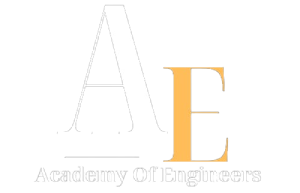Courses
Computer Organization & Architecture Tuition Class
- February 17, 2024
- Posted by: admin
- Category: Online BTech Computer Organization & Architecture Tuition Class

Computer Organization & Architecture Tuition Class
Elevate Your Skills with Online Tuition by Academy of Engineers
Call 9818003202 for the best Computer Organization & Architecture Tuition Class
Elevate Your Skills with Online Tuition by Academy of Engineers
Are you ready to unlock your full potential in BTech studies? Look no further than the Academy of Engineers for top-notch online tuition tailored to your needs. Whether you’re grappling with complex engineering concepts or aiming to ace your exams, our comprehensive programs are designed to propel you towards success.
Why Choose Online BTech Tuition by Academy of Engineers?
1. Expert Guidance:
Our team comprises seasoned educators and industry professionals who bring years of experience to the virtual classroom. With their guidance, you’ll gain invaluable insights into core subjects, practical applications, and emerging trends in the field of engineering.
2. Personalized Learning:
We understand that every student has unique strengths and weaknesses. That’s why our online tuition programs are fully customizable to suit your learning style and pace. Whether you prefer one-on-one sessions or group discussions, we’ve got you covered.
3. Interactive Sessions:
Forget boring lectures and dull textbooks. At the Academy of Engineers, we believe in making learning engaging and interactive. Our live sessions feature dynamic presentations, real-world examples, and hands-on exercises to keep you actively involved and motivated.
4. Flexible Scheduling:
Balancing your BTech studies with other commitments can be challenging. That’s why we offer flexible scheduling options for our online tuition sessions. Whether you’re a morning person or a night owl, you can choose the time that works best for you.
5. Comprehensive Curriculum:
From foundational courses to advanced topics, our curriculum covers all the essential aspects of BTech studies. Whether you’re studying mechanical engineering, computer science, electrical engineering, or any other discipline, you’ll find expert guidance and resources to support your learning journey.
Get Started Today!
Don’t let academic challenges hold you back from achieving your goals. With online tuition by the Academy of Engineers, you can take your BTech studies to the next level from the comfort of your own home. Join us today and unlock a world of opportunities in the field of engineering!
Objective: To understand the architecture and organization of computer in depth.
Basic Computer Organization and Register transfer language: Overview of basic digital building blocks, Basic structure of a digital computer: Von-Neuman architecture, Introduction to types of buses, Bus and memory transfer, Bus architecture using multiplexer and tri-state buffer,
register transfer language, Micro operation: arithmetic, logical, shift micro-operation with hardware implementation, Arithmetic Logic Shift Unit.
Levels of programming languages: Machine language, Assembly language, High level language, programme development steps: compiling and assembling programmes.
Computer Design and Instruction set architecture.
Instruction codes, General computer registers with common bus system, addressing modes, computer instructions: Memory Reference, Register reference, Input-Output Instructions, Instruction cycle, Input-Output configuration and interrupt cycle.
Internal architecture of 8085 microprocessor: Pin diagram, 8085 instructions set.
CPU Design:
Hardwired Control Unit, Timing and control, Micro Programmed Control Unit: Control memory and address sequencing.
Pipelining: Introduction to Flynn‘s classification, arithmetic pipeline, instruction pipeline, pipeline conflict and hazards.
Computer arithmetic: Unsigned, Signed 1‘s, 2‘s compliment notations, addition, subtraction, multiplication and
division (Hardware implementation), introduction to floating point notation: IEEE 754 standard.
Memory & Input/output organization: Memory Hierarchy, Main Memory (RAM and ROM Chips), Virtual memory, Cache memory and mappings.
Input/Output interface: I/O bus and interface modules, I/O bus Vs memory bus, Isolated Vs Memory mapped I/O, Bus arbitration, modes of transfer.
